
The 89th Infantry Division, originally known as the "89th Division," was an infantry formation of the United States Army that was active during World War I, World War II, and the Cold War.

The 80th Training Command is a formation of the United States Army Reserve.
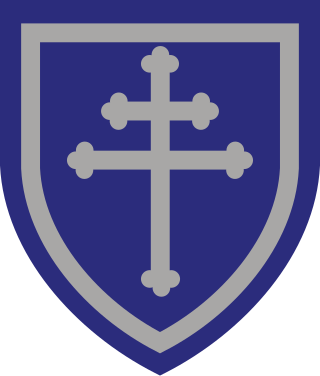
The 79th Infantry Division was an infantry formation of the United States Army Reserve in World Wars I and II.
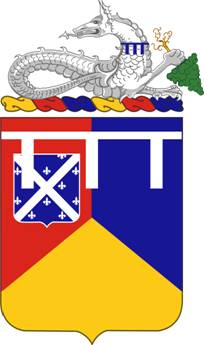
The 66th Armor Regiment is the oldest armored unit in the United States Army, tracing its lineage to the 301st Tank Battalion which served with distinction soon after it was formed in the First World War; the 301st trained at Camp Meade, Maryland, where then-Cpt. Dwight D. Eisenhower was an instructor. It has often been rumored that the 301st, the parent unit of the 66th, was first commanded by Col. George S. Patton, but this appears not to have been the case; while Patton was the first officer assigned to the Tank Corps, and while the 301st Tank Battalion was the first unit formed, Patton went nearly immediately to France to train Americans attached to Allied commands. The 301st was the only American heavy tank battalion to have seen action in the war. After the war, the 301st transitioned in the Regular Army to become the 66th Infantry Regiment by way of the 16th Tank Battalion.

The 317th Infantry Regiment was a regiment of the United States Army during World War II. It was one of three infantry regiments in the 80th Infantry Division. Today, it is known as the 317th Regiment and is based in Lynchburg, Virginia as a training unit within the United States Army Reserve - currently under the 104th Training Division.
The 54th Infantry Regiment is a United States Army Regimental System parent regiment of the United States Army. It is represented in the active Army by the 2nd and 3rd Battalions, which conduct Infantry One Station Unit Training (OSUT) at Fort Moore, Georgia.

The 158th Infantry Brigade is an infantry brigade of the United States Army. It has subordinate battalions throughout Florida and Puerto Rico.
The 5th Brigade, 78th Division was an AC/RC unit based at Joint Base McGuire–Dix–Lakehurst, New Jersey. The unit was responsible for training selected United States Army Reserve and National Guard units along the East coast. The brigade was a subordinate unit of First Army Division East, First United States Army when it was inactivated in 2006.

The 157th Infantry Brigade is an active/reserve component (AC/RC) unit based at Camp Atterbury, Indiana. The unit is responsible for training selected United States Army Reserve and National Guard units. The unit was activated using the assets of the 5th Brigade, 87th Division. The brigade is a subordinate unit of First Army Division East.
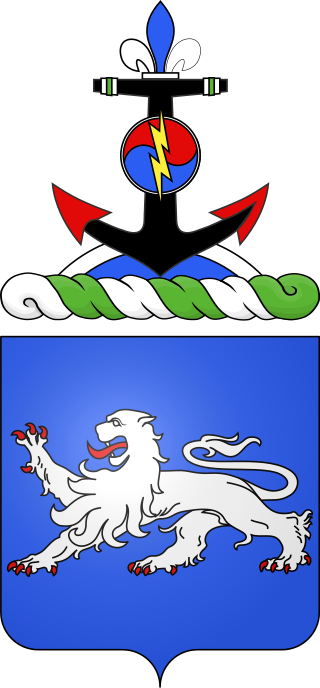
The 68th Armor Regiment is an armored regiment of the United States Army. It was first activated in 1933 in the Regular Army as the 68th Infantry Regiment.
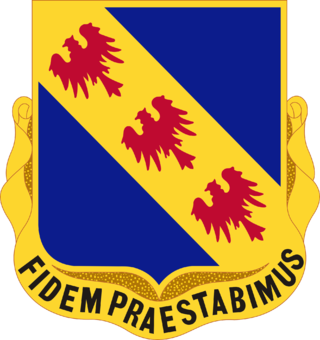
The 355th Infantry Regiment is an infantry regiment of the United States Army. The 1st Battalion of the regiment an active unit of the United States Army Reserve.
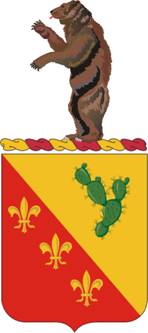
The 129th Field Artillery Regiment is a regiment of the Field Artillery Branch of the United States Army, part of the Missouri Army National Guard. The 1st Battalion is the only active unit of the regiment, with the battalion Headquarters and Headquarters Battery in Maryville, Battery A in Albany, Battery B in Chillicothe, and Battery D in Independence. The battalion is a subordinate unit of the 130th Field Artillery Brigade, headquartered in Manhattan, Kansas.

The 6th Field Artillery Regiment is a Field Artillery Branch regiment of the United States Army first activated in 1907 from numbered companies of artillery. It was first organized with two battalions.
The 203rd Engineer Battalion is a combat engineer battalion of the Missouri Army National Guard.
The 307th Infantry Regiment was a National Army unit first organized for service in World War I as part of the 77th Division in France. It later served in the Pacific Theater during World War II. Since then it has served as a training Regiment. In 1999, it was withdrawn from the Combat Arms Regimental System and redesignated as a non-branch regiment. The regiment's 1st Battalion is assigned to the 174th Infantry Brigade at Joint Base McGuire–Dix–Lakehurst, New Jersey, with the 2nd Battalion is assigned to the 157th Infantry Brigade at Camp Atterbury, Indiana.
The 306th Infantry Regiment was a National Army unit first organized for service in World War I as part of the 77th Infantry Division in Europe. It later served in the Pacific Theater during World War II. Since then it has served as a training Regiment. In 1999, it was withdrawn from the Combat Arms Regimental System and redesignated as a non-branch regiment. The regiment's 1st, 2nd, 4th, and 5th battalions are stationed at Fort Stewart under the command of the 188th Infantry Brigade. The 3rd Battalion is inactive.

William Jones Nicholson was a career officer in the United States Army. He attained the rank of brigadier general during World War I as commander of the 157th Infantry Brigade, a unit of the 79th Division. He was most notable for leading his brigade to victory during the September 1918 Battle of Montfaucon, part of the first phase of the Meuse-Argonne Offensive, for which he received the Distinguished Service Cross.

The 310th Infantry Regiment was a National Army Infantry Regiment first organized for service in World War I as part of the 78th Division. It later served in the European Theater during World War II. Since then it has served as a training Regiment, training Army Reserve and Army National Guard soldiers for service after the September 11 terrorist attacks.
The 305th Infantry Regiment was a National Army unit first organized for service in World War I as part of the 77th Infantry Division in Europe. It later served in the Pacific Theater during World War II. Since then it has served as a training Regiment. In 1999, it was withdrawn from the Combat Arms Regimental System and redesignated as a non-branch regiment. The regiment's 1st and 2nd battalions are stationed at Camp Shelby under the command of the 177th Armored Brigade. The regiment's 3rd battalion is inactive.
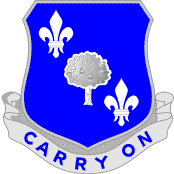
The 359th Infantry Regiment is a unit of the United States Army. It was active in Europe as part of the 90th Infantry Division during World War I and World War II, and components of the regiment were later part of the United States Army Reserve.
















